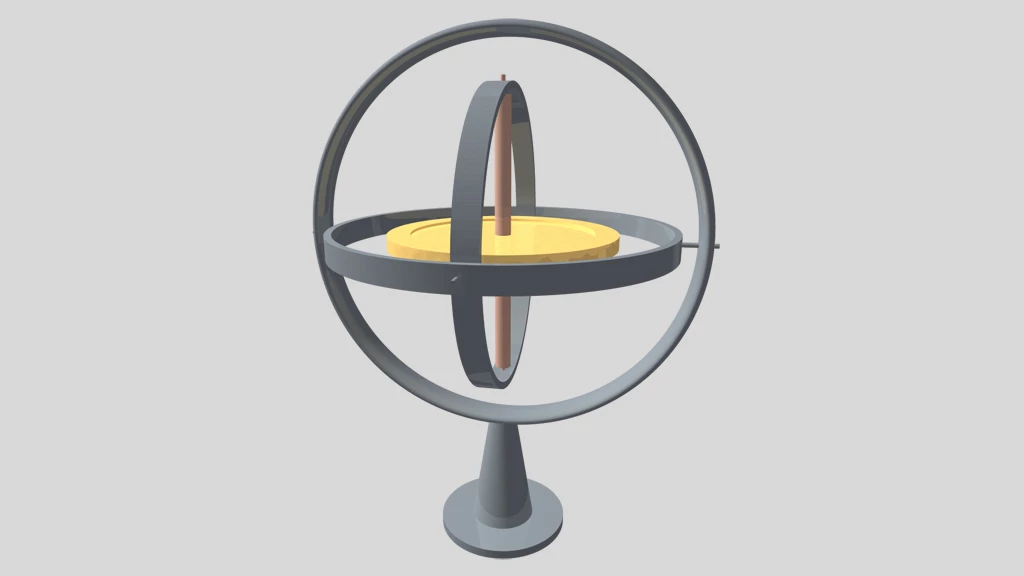Earlier this year the iPhone 4 became the first smartphone to boast a built-in gyroscope in addition to an accelerometer, proximity sensor and ambient light sensor. Combining a gyroscope with an accelerometer allows the device to sense motion on six axes – left, right, up, down, forward and backward, as well as roll, pitch and yaw rotations – allowing for more accurate motion sensing abilities comparable to a game controller such as the Wii-mote. The iPhone 4 uses a MEMs (micro-electro-mechanical-systems) gyroscope but a newly developed optical gyroscope, small enough to fit on the head of a pin, could allow the integration of more accurate motion sensing technology in not only smartphones, but also in medical devices inside the human body.
The 3-axis MEMs gyroscope found in the iPhone 4 consists of miniature vibrating elements that detect tiny changes in vibration forces when the phone is moved. Conventional gyroscopes, also known as rotational sensors, that are widely used as a navigation tool in ships and airplanes are much more accurate but measure about six to eight inches square (15 – 20cm) and weigh two or three pounds (around a kilogram). While that’s fine for a ship or plane it’s obviously not so good for a mobile phone.
The new nano-sized optical gyroscopes developed by a team of researchers at Tel Aviv University (TAU) working in collaboration with Israel’s Department of Defense are small enough to fit on a computer chip without compromising sensitivity. According to Prof. Koby Scheuer of Tel Aviv University's School of Physical Engineering, these new gyroscopes will have the ability to pick up smaller rotation rates, delivering higher accuracy while maintaining smaller dimensions.
Laser precision
The key to the nano-sized gyroscopes is extremely small semi-conductor lasers. When the device rotates, the properties of the light produced by the lasers – including its intensity and wavelength – changes. Measuring these differences allows the device to determine rotation rates. These lasers are just a few tens-of-micrometers in diameter meaning, when finished, the gyroscope itself will measure about a millimeter by a millimeter (0.04 x 0.04 inches) and be able to be built onto a computer chip that would also contain other necessary electronics.
Applications
With technology market research company ABI Research predicting that about 50 percent of smartphones will have inbuilt gyroscopes and accelerometers by 2013, developers will be able to create new user interfaces, games and other applications that make use of them. Prof. Scheuer says that his nano-gyroscopes could also provide a tracking function beyond the capabilities of existing GPS systems. If you find yourself in a place without reception, you would be able to track your exact position without the GPS signal," he says.But smartphones aren’t the only devices Prof. Scheuer anticipates will benefit from the nano-sized gyroscopes. He says there are medical benefits to medical science as well. Currently, small capsules that contain cameras pass through the body during some diagnostic procedures, but to know where the capsule is within a patient, doctors must track its signal from the outside. With the addition of a nano-gyroscope, the capsule would have a built-in navigation system, which would provide the ability to move the capsule to more specific and precise locations within the body.
Prof. Scheuer and his team of researchers are currently working on lab demonstrators of the nano-gyroscope, which he predicts will be ready for testing in a few years' time. The team’s research was recently described in the journal Optics Express.




